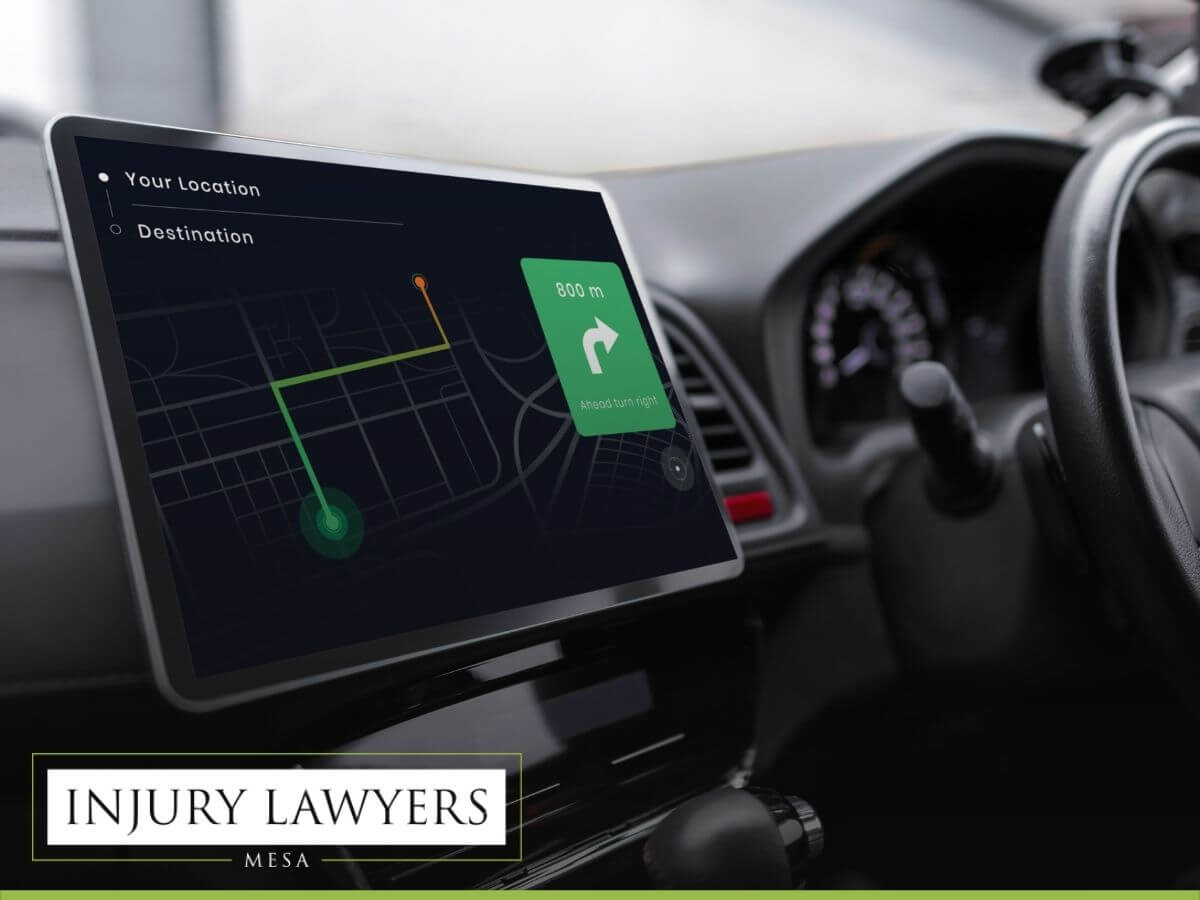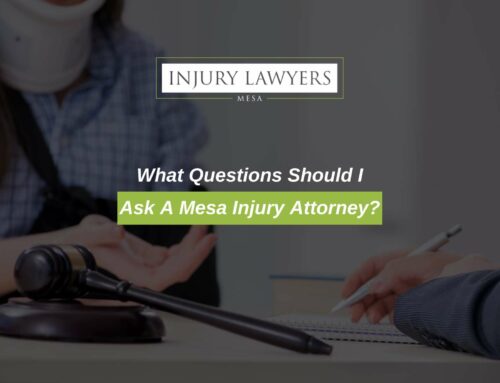Self-Driving Cars & Arizona Personal Injury Claims
Our Mesa Injury Attorneys Look At Accidents Involving Self-Driving Cars
Self-driving cars are here, and we can only expect them to grow in popularity in the years to come. Rideshare services like Uber and Lyft even plan to implement self-driving cars in the near future. The technology behind them is advanced, and they have several features to make them as safe as possible. But with all of these autonomous vehicles coming to our roads, it’s inevitable that they will eventually be involved in some traffic accidents. And contrary to popular belief, self-driving cars are actually more likely to be in traffic accidents than cars driven by humans. In cars driven by humans, the crash rate is 4.1 accidents per million miles. For autonomous vehicles, the crash rate is 9.1 accidents per million miles.
When one or both drivers (and any passengers) are injured in any kind of traffic accident, including one involving a self-driven vehicle, they may need to pursue a personal injury claim to receive compensation for their damages. You aren’t entitled to a court-appointed attorney in a personal injury claim, as you would be in a criminal trial. So if you want attorney representation, it will be your responsibility to go out and find it. For your free case evaluation with one of our experienced Arizona injury lawyers, contact our firm by phone or with our online form.
Arizona Car Accident Liability
Most states either follow the doctrine of comparative or contributory negligence. Arizona is a comparative negligence state. This means that you can file a personal injury claim after an accident in Arizona, even if you were 99% at fault for it. However, in that case, that person’s damages would be proportionally reduced by 99 percent. A party who intentionally caused an accident can’t recover under Arizona injury law. Other states may have lower cutoffs, like 50 percent.
How can you be partially at fault for a car accident? You could be violating minor traffic laws that if you had followed, the accident may have been less likely to occur. Examples include speeding, drifting between lanes, improper turn signal use, using your brights or failing to have your lights on at night, sudden braking, improper yielding, and more. You (and your attorney, if you hire one) and the other party will need to try to come to an agreement about assignment of fault, or it will need to be litigated in court. Most self-driving cars are equipped with dash cameras, so there will likely be footage of the accident.
Who Is At Fault In a Self-Driving Car Accident?
In most personal injury suits arising from car accidents, one or both drivers involved is at fault. Whether you were partially at fault for creating an accident with a self-driving car, there are a few different parties who could be at fault for the accident.
Self-driving cars aren’t completely fail-proof, and some still require that a driver be available to take control in emergencies. On average, driverless vehicles experience some kind of technical issue every 8 miles. So if the owner of the vehicle isn’t paying attention, the driverless technology could disengage and cause an accident. A driver needs to still be alert and responsible if the self-driving technology fails to detect any threats on the road.
In other cases, the manufacturer of the vehicle’s technology could be liable for the crash. In some cases, even if the driver had intervened, a defect in the vehicle’s technology could be the precipitating factor behind the accident. Self-driving vehicles also seem to be susceptible to burning in crashes. Fires started from lithium batteries are especially dangerous because they are metal fires, and trying to douse them with water will only make things worse. The threat of explosion also makes metal fires particularly dangerous to emergency responders.
The company that designs the vehicle and the company that designs the self-driving technology are often two entirely separate entities. Even if the technology is designed flawlessly, there could be errors in normal mechanical components of the vehicle, such as the brakes, that can cause accidents in self-driving cars. If any aspect of the vehicle’s design made it unreasonably unsafe for the driver, the manufacturer could be held liable for damages incurred due to an accident.
In rare instances, an unknown outside party could be responsible for a crash in a self-driving vehicle. Someone with advanced computer hacking abilities could hack into a vehicle’s self-driving technology to ignore threats, speed excessively, suddenly brake, etc.
Of course, fault determinations can vary widely on a case by case basis. And the other driver’s insurance company will be looking for any possible way to assign you as much fault in creating the accident as they can. You will need demonstrative evidence, compelling testimony, and skilled negotiation to protect your liability in the claim. The best way to determine responsible parties after an accident with a self-driving car is to consult with an experienced personal injury attorney licensed in the area where the accident occurred.
Damages In a Personal Injury Claim Involving Self-Driving Cars
Before you make any demands or sign any agreements with the other party, it’s crucial that you have an accurate calculation of all the damages you incurred due to the accident. You only have one chance to collect from the other party, so if you accept a settlement and later realize you have several more damages than previously accounted for, you will be out of luck.
Some Of The Damages That Can Be Collected In a Personal Injury Suit Include:
- Missed time from work due to your injuries
- Loss of earning potential due to permanent injuries
- Medical bills (your health insurance company may request compensation through subrogation)
- Future medical expenses for long-lasting or permanent injuries
- Loss of companionship or consortium for your spouse
- Pain and suffering: This can encompass several types of damages that all relate to the emotional and physical trauma you can experience due to an accident. Pain and suffering is most frequently calculated by adding the rest of your damages, and multiplying that sum by a number between one and five. A higher multiplier will be used in accidents where the party at fault was being especially negligent or reckless, or when the injuries are severe.
Contact Your Arizona Accident Lawyers for Assistance
While self-driving and autonomous vehicles present numerous convenient possibilities, there are also several risks that are known and unknown. It’s important that owners of self-driving vehicles maintain sufficient insurance coverage in case they do get in a wreck. Otherwise, they could end up in a lawsuit for any excess damages beyond their policy’s coverage after an accident.
If you’ve been the victim of a car accident in Arizona, it’s never too early to start seeking guidance and possibly representation for a Mesa personal injury claim. In most cases, you will have 2 years from the date of the accident to file your lawsuit. But with medical appointments, looming bills and other expenses, and endless settlement negotiations, it can be hard to do it all on your own.
The Injury Lawyers Mesa Advantage
At Mesa Injury Lawyers, our injury team has decades of experience helping accident victims in Arizona receive fair compensation for their injuries at a fair price. While many of our competitors charge 33% or more of their clients’ final awards, we offer a guaranteed contingency rate of 25%. To learn more about the benefits of hiring Mesa Injury Lawyers for your personal injury claim, call or use our online form to schedule your free consultation today. Click Here for additional Information.
1731 West Baseline Road Suite #103
Mesa, AZ 85202
Tel: 602-600-6001
Enail: [email protected]
Website: injurylawyersmesa.com






